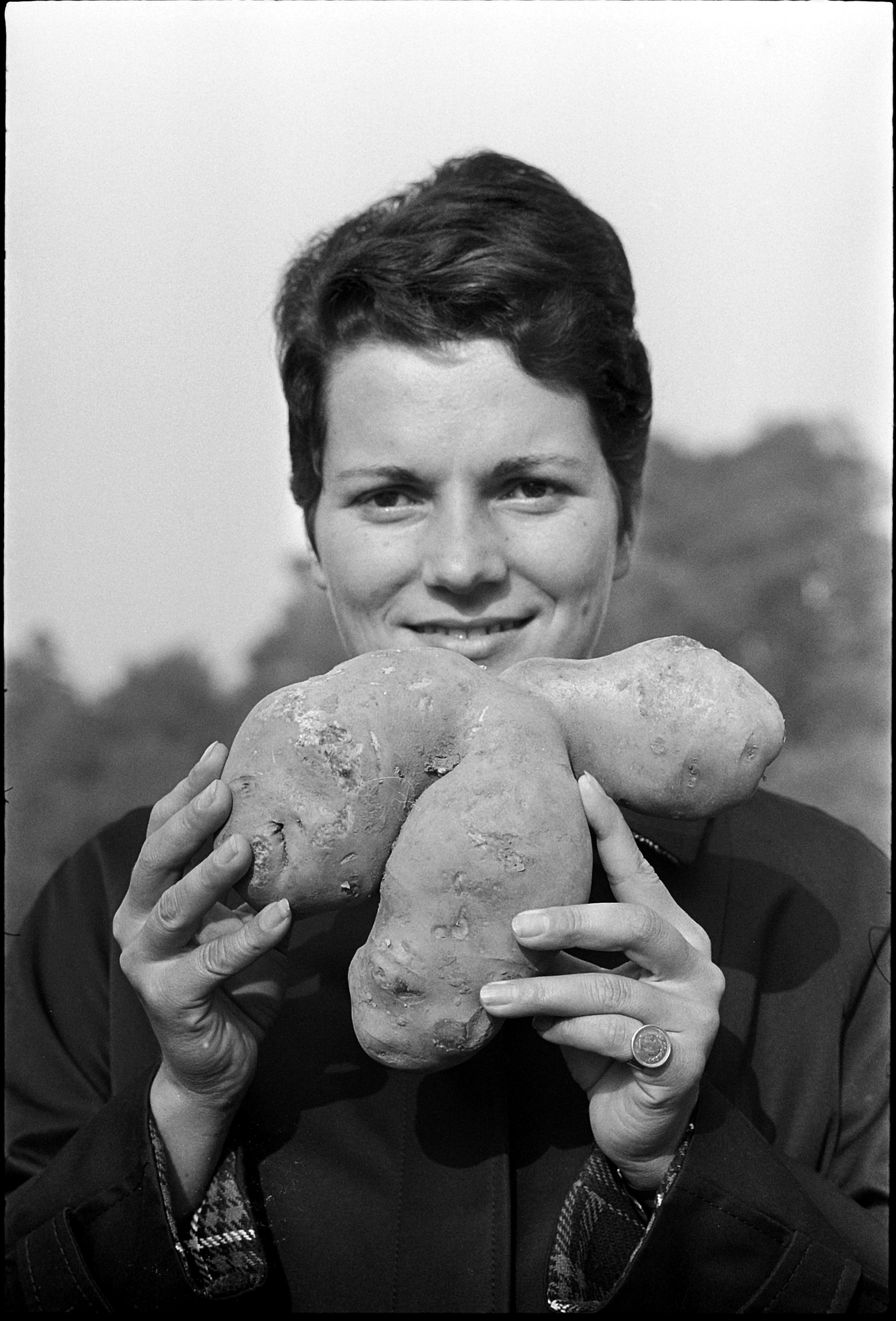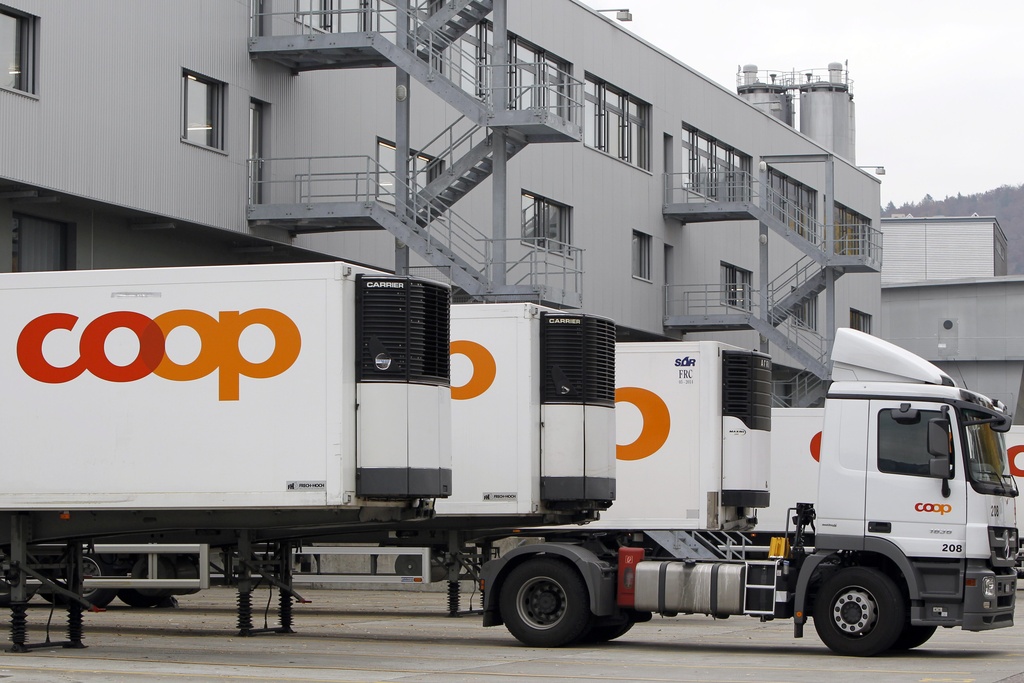Potato farmers blighted by market forces

Despite a bumper potato harvest this year, growers’ joy is being spoiled by big retailers squeezing them on price and rejecting bigger-than-average spuds.
Charlotte shouldn’t be bigger than size 60-120. Nothing to do with a farmers lonely hearts column, these are the accepted measurements of the Charlotte potato variety (see link).
In other words, Charlotte – a frequent visitor on Swiss plates “with its distinctive long, oval shape, white skin and moist texture” – shouldn’t be more than 60 millimetres wide and 120 millimetres long.
If they are, they won’t fit on the shelves of the big supermarkets – not to mention in the cooking pots of customers, who are increasingly asking for smaller varieties. Industry potatoes used to make chips or crisps can be a bit bigger.
The problem is that the dry spring and in particular the very warm autumn have conspired to increase both the number of tubers per plant and also their size.
Ruedi Fischer, president of the Swiss Potato Producers Association, is sceptical of “record years”, preferring to talk about an “above-average crop”, as in 2009. Many regions are reporting excess yields of 20 per cent or more, while elsewhere the crop is average.
“In addition to the large harvest, the market conditions are very tense. We’re really feeling the struggle for market share,” he told swissinfo.ch.
Chips are down
Worst hit are classic table potatoes such as the Charlotte, consumption of which has dropped.
Fischer points to a better situation with industry potatoes.
“Here the entire harvest is taken. McDonald’s for example covers its needs 100 per cent with the ‘Innovator’ variety,” he said.
To avoid producing a surplus, the crop limit has had to be lowered in some regions to 35 tonnes, although some farmers produce up to 50 tonnes.
Unlike up until two years ago, the government no longer helps out financially in cases of overproduction.
Trough love
In order to reduce pressure from the market, the producers’ association introduced a system of internal retention: denaturing – deliberately spoiling – a hundredweight of potatoes will earn a farmer SFr19 ($21). In effect, this means using them as animal fodder.
“Cows love eating spuds. But for pigs they have to be steamed,” said Fischer, who reckons that more than 10,000 tonnes of potatoes will end up in Swiss troughs this year.
According to one old saying, “the stupidest farmers have the biggest potatoes”. This year, the weather has ensured big tubers irrespective of the IQ of whoever planted them.
“Big potatoes are not good for farmers,” Fischer agreed. Whenever there’s a surplus, those that exceed the norm are mercilessly discarded.
He says farmers have been accused of letting their potatoes grow too big. “But with the late summer temperatures it all happened so quickly – they exploded over just one weekend”.
Dud spuds
As a result of market pressure and denaturing, farmers haven’t been able to convert their bumper potato crop into coins.
Fischer says another reason is that growing potatoes is capital intensive. “It begins with the seeds: one hectare requires SFr3,500 worth of seed potatoes.”
Seed potatoes are used to grow more plants rather than to eat. They have usually been treated with products to make them resistant to disease or insects.
“Then there’s pesticide and fertiliser at SFr2,000 a hectare. And the potato harvester will set you back more than SFr100,000. One hectare of potatoes costs farmers around SFr9,000 before they make even one franc back. And that doesn’t include the labour,” Fischer said.
Officially, 100 kilograms of Charlotte potatoes cost SFr48. The same quantity of industry variety Agria brings in SFr42.
“But that really is the absolute gross price. From that sum you deduct costs for sorting, storing, shrinkage [loss of weight during storage], duds in the field [estimated at five to ten per cent], complaints about quality and fees for the producers’ association.”
Net, farmers earn SFr38-40 for 100kg of Charlotte and SFr34-37 for 100kg of Agria.
Despite all this, Fischer doesn’t want to complain. Instead, he and his colleagues are working to increase potato consumption in Switzerland, an erstwhile agricultural country, for example with advertising campaigns.
The Swiss eat around 300,000 tonnes of potato a year – half are table potatoes, half in the form of chips or crisps.
This works out at 46kg of spud a head, a relatively low figure within Europe. Latvians chomp through a chart-topping 147kg each, followed by the Poles (126kg), Irish (123kg), Lithuanians (116kg) and Estonians (107kg). The wooden spoon goes to the Bulgarians (38kg).
In a good year such as 2011, potato self-sufficiency would be reached in Switzerland without problem. Nevertheless, 15,000-20,000 tonnes of potato – mostly new potatoes – are imported.
(Translated from German by Thomas Stephens)

In compliance with the JTI standards
More: SWI swissinfo.ch certified by the Journalism Trust Initiative















You can find an overview of ongoing debates with our journalists here . Please join us!
If you want to start a conversation about a topic raised in this article or want to report factual errors, email us at english@swissinfo.ch.